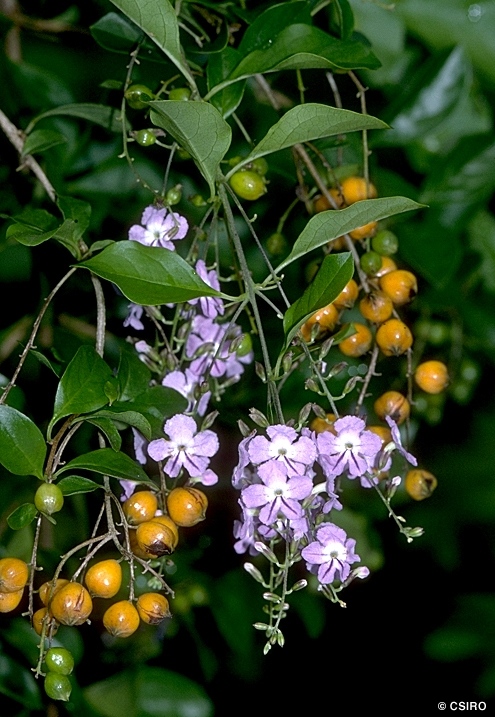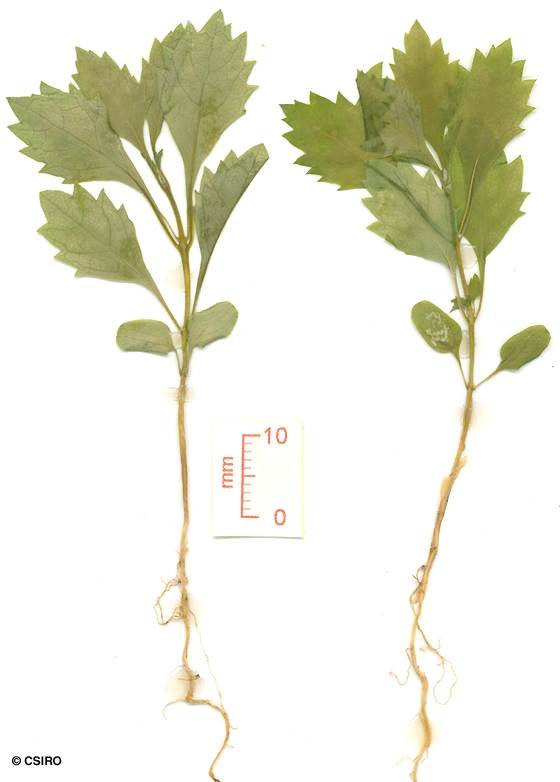Australian Tropical Rainforest Plants - Online edition
Duranta erecta L.




Linnaeus, C. von (1753) Species Plantarum 2: 637. Type: Plumiers plate under Castorea (Library, University Groningen) Manuscript 98a, Dept Old & Rare Books lectotype). Photo AD.
Golden Dewdrops; Sky Flower
Usually grows as a rather weak-stemmed, multistemmed shrub.
Compound inflorescences about 10-30 cm long, individual racemes many-flowered, about 3-10 cm long. Flowers fragrant. Calyx tubular, about 3-7 mm long, 5-angled with five minute teeth at the apex, each tooth about 0.5-1 mm long. Corolla tube about 6-10 mm long, corolla lobes about 3-5 x 2.5-3.5 mm. Stamens inserted above the middle of the corolla tube, filaments 0.5-1.5 mm long, hairy near the base. Anthers about 1 mm long. Ovary green and glabrous, about 1 mm diam., style glabrous, about 2-3 mm long.
Fruits subglobose or obpyriform, about 7-12 mm diam., enclosed in the orange-yellow persistent calyx which ends in a curved beak at the apex. Pyrenes about 3 x 3 mm. Each pyrene containing two seeds, each seed about 2 mm long. Embryo about 1.7 mm long, cotyledons longer than the radicle.
Cotyledons ovate, about 6-10 x 5-6 mm, petioles about 2-3 mm long. First pair of leaves simple with three or four large teeth on each side. Leaf blades about 16-22 x 9-10 mm. At the tenth leaf stage: leaf blade +/- oblanceolate, base attenuate, margins coarsely serrate towards the apex, petiole very short. Spines about 5-10 mm long, present in most leaf axils or supraxillary. Seed germination time 26 to 33 days.
Suspected of being poisonous to pigs. Children who have eaten the fruits have been reported as becoming ill and subsequently dying. Everist (1974).
Commonly cultivated in gardens and as a hedge. The orange fruits are attractive to birds.
This species is poisonous.





